
Being someone who appreciates good science fiction and has an interest in real-life space exploration, it's easy for me to become intrigued with any game that promises to let me explore an alien world. Lifeless Planet promised to let me do just that, so it was a no-brainer Steam Summer Sale purchase for me last year, despite the mediocre critical reviews.
The basic premise of the game is that you play as a colonist sent to alien planet thought to be rich in life and habitable for humans. You wake up from cryo-sleep to find your ship has crash landed and your two crewmates are missing. Worse yet, the planet you crashed on seems to be a desolate wasteland devoid of life.
Are you even on the right planet? If so, where's all the life?
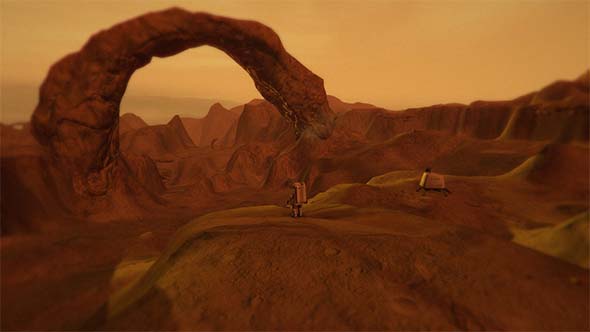
And we're off to find our missing crew-mates and figure out why the planet is lifeless.
From here, you set off to follow the tracks of your fellow crew mates in an attempt to find them and figure out where you are. Things get complicated very early on when you find a long-abandoned Soviet village. Wherever you happen to be, the Ruskies beat you to it!
But this just opens up even more questions: how did the Russians get here? And where did they all go? The mysteries behind these questions are supposed to be the driving force behind the game.
The bulk of the game, thus consists of wandering around the various alien landscapes in search of answers. This exploration requires a moderate amount of fairly trivial platforming, and you stop occasionally solve an elementary puzzle.
Platforming is mostly comfortable and works adequately. You have a malfunctioning jet pack that allows you a small boost to elevate you to higher platforms, jump longer gaps, or soften your fall. I had some occasional problems with the character sliding off of the geometry, and there were a couple areas late in the game that required multiple jumps without stopping that were difficult to control accurately. But other than that, the challenge of the platforming was minimal. The intended route is always obvious, so there was never any question about where I was supposed to go.
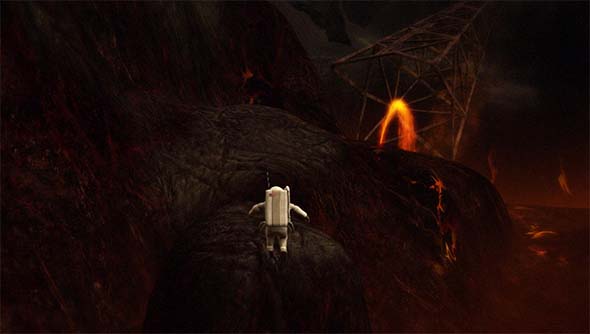
Your jet pack allows you to clear pitfalls and jump over large obstacles.
Puzzles aren't much more of a challenge. They are almost all environmental or physics puzzles that vary from "find the key" to "put the rock in the hole" to "push the boulders". There's nothing here that a grade-schooler couldn't figure out.
The rest of the game is just a steady walk along the linear paths ...
[More]
644391df-c7c0-4240-9d5b-33dfda1071c1|2|3.0
Tags:Lifeless Planet, Stage 2 Studios, Lace Mamba Global, Steam, indie gaming, science fiction, space, exploration, colonization, astronaut, platform, puzzle, adventure, allegory, Soviet Union, Russia, Cold War, portal, alien, plant, radiation, Achievement unlocked

I was finishing up my Civ V: Brave New World strategies this fall, and thought that I'd finally have some time to play other games besides Civilization. Firaxis and 2K, however, had other plans. Instead of being able to play other Steam games and getting back to my PS3, instead, I now have Civ in SPACE!
I guess I can't escape Civ so easily...
So is Beyond Earth going to hold my attention, keep me up till 3 in the morning playing "one more turn", and monopolize my PC gaming? Or will it be a short diversion before being shelved in favor of other games?
Table of Contents
Most of the gameplay mechanics of Beyond Earth are variations of equivalent mechanics in Civilization V, with more or less complexity. This makes the game very accessible and familiar for most Civ players, but it also means that Beyond Earth isn't really pushing any gameplay boundaries. Whereas Civ V's transition to a hex grid revolutionized the series, Beyond Earth just feels like more of the same.
Most of the added complexity works in the game's favor, but some mechanics have been simplified such that they almost feel pointless.
Beyond Earth's extraterrestrial setting does play a small factor in the gameplay and differentiates this game a bit from Civilization V. The most prominent displays of this are in the alien life forms and the terrain of the map. The inclusions of canyons as a geography characteristic is mostly superficial, as they function almost identically to mountains. The biggest change is the inclusion of toxic "miasma". Miasma tiles cause damage to units that end their turn on it, and trade units cannot pass through miasma at all.
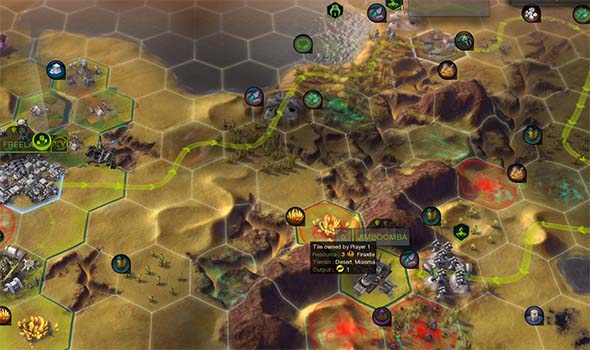
Miasma damages units and blocks trade routes until you unlock the ability to remove it or survive it.
This adds a satisfying challenge and sense of having to deal with a hostile alien environment.
This adds some challenge to the first half of the game, since miasma can force the player to explore and expand differently than they would in Civ V. Miasma can force your workers to have to avoid improving certain terrain, and may prevent explorers from accessing certain regions of the map or completing some expedition sites. It can also prevent your trade units from following direct routes between cities, which can cause them to follow winding paths far outside your inherent zone of control, making them harder to protect.
Contrary to the developers' claims prior to release, the aliens really are just reskins of Civ V's barbarians. They are counted as "enemy" units to every civilization and inflict zone of control automatically. They spawn randomly from nests that function identically to encampments, and even offer monetary rewards for entering the tile and destroying the nest. The only major difference is ... [More]
aed9db83-3047-4b4d-b015-5efe80732985|3|4.0
Tags:Sid Meier's Civilization, Civilization: Beyond Earth, review, science fiction, space, affinity, Firaxis, 2K Games, PC, Steam, strategy, grand strategy, turn-based strategy, alien, Civilization: Beyond Earth
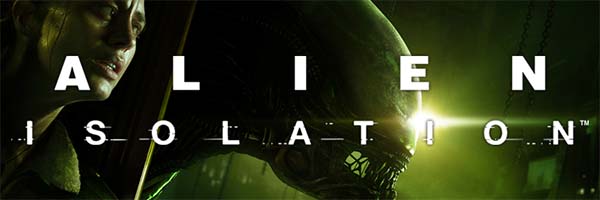
It's been a long time since there's been a mainstream survival horror game. Alien: Isolation may not be the same kind of traditional survival horror as its classic Resident Evil, Silent Hill, or Alone in the Dark predecessors, but many players may not have much familiarity with the stricter resource management that is required in a game like this.
Dead Space and The Last of Us had resource management elements, but since those games were more action-oriented, you weren't under as much pressure to conserve supplies. Alien: Isolation, however, is a bit slower and requires slightly better management, since it isn't quite as generous about providing supplies. As such, I thought I'd offer a few tips for inexperienced survival horror players to help them cope with surviving on Sevastopol.
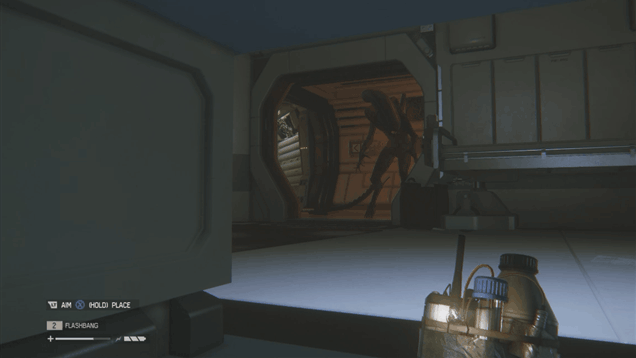
Don't hide in plain view of a doorway or down the hallway, since the alien will be able to see you.
I'm not going to post specific tips for problem areas of the game. For those, you can look for actual walkthroughs provided by other authors. Instead, these will be five general-use tips that will apply to the majority of the game:
[More]
9bb4d77a-97dd-4679-b3b1-cde0ba3cf6cd|1|5.0
Tags:Alien Isolation, Alien, the Creative Assembly, Ripley, science fiction, horror, survival horror, resource management, crafting, memo, flamethrower, med kit, molotov

There is no shortage of games that have been based on the Aliens movie. Heck, even Starcraft is basically an unlicensed Aliens versus Predator game! But games that have the Aliens name on them have a very shaky track record. Some have been good. Others have been absolutely terrible. Last year's highly-anticipated Aliens: Colonial Marines (by Gearbox) just might have been the worst of the bunch, and left a very sour taste in fans' mouths.
But this new game is different. It's developed by Creative Assembly (of Total War fame), and its actually based on the first film of the franchise: Alien (singular).
Where the sequel Aliens is a high-octane sci-fi action film about a battalion of macho space marines being put in their place by a hive of aggressive xenomorphs, Alien is a much slower and more cerebral sci-fi horror movie about a group of space truckers who get picked off one by one by a single hostile xenomorph. This shift in focus from the action-packed sequel to its smarter horror predecessor is a welcome change for the franchise and a breath of fresh air in AAA game development. For over a decade now, horror has been on the decline when it comes to big-budget games. This is thanks in part to Resident Evil 4, and the only major horror game that's come out since has been Dead Space. It seemed that the slower, more cerebral style of horror that was popular during the PS1 and PS2 era (with games like Resident Evil and Silent Hill) was all but dead in mainstream gaming.
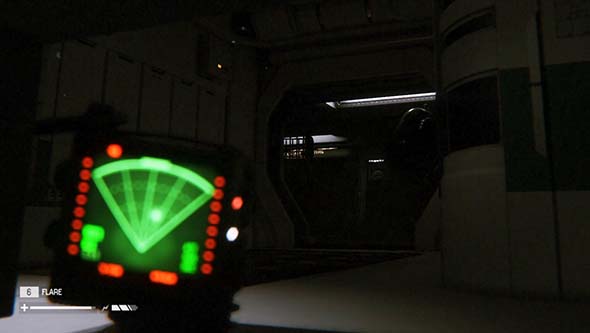
The motion tracker has a nifty control that lets you change focus between the tracker and the background environment.
So does Alien: Isolation live up to the hype and breath new life into the classic genre of survival horror?
... [More]
8984569a-40c8-4028-ae85-daf24bd13be6|3|5.0
Tags:Alien Isolation, Alien, the Creative Assembly, Ripley, Sigourney Weaver, Ridley Scott, Dead Space, science fiction, horror, survival horror, movie tie-in

I don't typically get excited about E3 the way that other gamers do. I try not to buy into hype, since I've been burnt before. I prefer a good review over the most stellar of previews. E3 tends to be a lot of pomp and circumstance; a cacophony of light and sound and flashy presentations of scripted, pre-rendered previews that are hardly ever representative of the final product.
I also haven't been paying much attention to the new consoles. They just don't excite me that much. Most quality games are seeing multi-platform releases these days, which usually includes a high-quality PC port that is at least as good (and sometimes better) than any console iteration. Gone are the days of sub-par, buggy PC ports. Or at least, that is how it seems to me. So I just don't see the new consoles as being worth while as long as I have a decent gaming PC. And in fact, these consoles will likely be inferior to good gaming PCs within a couple years. So what's the point in investing in one?
There are a few games on the horizon that look intriguing. I've already talked about Evil Within and Alien Isolation as being two of my most anticipated games of this fall. Both of these games will have PC versions that I will likely purchase, so no need to invest in a new console yet.
There's also a new project by the developers of Demon's Souls that was announced as a PS4 exclusive. That game could have the potential to sell a PS4 to me, but I'm going to wait to see more of the game before I get too excited.
But E3 did have one stand-out surprise that really piqued my interest. It's a new game by a developer called Hello Games. The game is called No Man's Sky.
This game was presented during the PS4 E3 press conference, but it's likely to see a PC version as well. If not, then this title could also turn into a PS4-seller for me.
The game is being advertised as an "infinitely-expanding procedurally-generated science fiction universe"... [More]
6617a227-7f85-4825-83cd-909e9afa2c06|0|.0
Tags:No Man's Sky, Hello Games, E3, Electronic Entertainment Expo, preview, procedurally generated, deterministic, algorithm, infinite, space, planets, worlds, exploration, dinosaurs, PlayStation, PlayStation 4, PS4, Sony, PC, multiplayer, MMO, Spore, Minecraft, Diablo, Star Trek, NASA, alien
|

| 12 | | | | | | | 60 | | 11 | | | | | | | 55 | | 10 | | | | | | | 50 | | 09 | | | | | | | 45 | | 08 | | | | | | | 40 | | 07 | | | | | | | 35 | | 06 | | | | | | | 30 | | 05 | | | | | | | 25 | | 04 | | | | | | | 20 | | 03 | | | | | | | 15 | | 02 | | | | | | | 10 | | 01 | | | | | | | 05 |
|